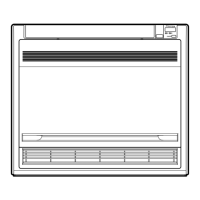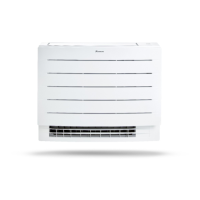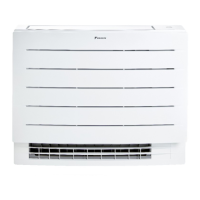2 | General safety precautions
Installer reference guide
10
CVXM-A, FVXM-A, CVXM-A9, FVXM-A9, FVXTM-A
Split system air conditioners
4P625991-1F – 2022.09
CAUTION
Do NOT use potential sources of ignition in searching for or detection of refrigerant
leaks.
NOTICE
▪ Do NOT re-use joints and copper gaskets which have been used already.
▪ Joints made in installation between parts of refrigerant system shall be accessible
for maintenance purposes.
Installation space requirements
WARNING
If appliances contain R32 refrigerant, then the floor area of the room in which the
appliances are installed, operated and stored must be larger than the minimum floor
area A (m²).
▪ FVXM-A and CVXM-A product range is allowed to be combined ONLY with
systems with total refrigerant amount ≤1.842kg (no floor area limitation applies).
▪ For FVXM-A9 and CVXM-A9 product range, refer to the "To determine the
minimum floor area"[424].
NOTICE
▪ Protect pipework from physical damage.
▪ Keep the pipework installation to a minimum.
2.2.3 Refrigerant — in case of R410A or R32
If applicable. See the installation manual or installer reference guide of your
application for more information.
DANGER: RISK OF EXPLOSION
Pump down – Refrigerant leakage. If you want to pump down the system, and there
is a leak in the refrigerant circuit:
▪ Do NOT use the unit's automatic pump down function, with which you can collect
all refrigerant from the system into the outdoor unit. Possible consequence: Self-
combustion and explosion of the compressor because of air going into the
operating compressor.
▪ Use a separate recovery system so that the unit's compressor does NOT have to
operate.
WARNING
During tests, NEVER pressurise the product with a pressure higher than the
maximum allowable pressure (as indicated on the nameplate of the unit).
WARNING
Take sufficient precautions in case of refrigerant leakage. If refrigerant gas leaks,
ventilate the area immediately. Possible risks:
▪ Excessive refrigerant concentrations in a closed room can lead to oxygen
deficiency.
▪ Toxic gas might be produced if refrigerant gas comes into contact with fire.

